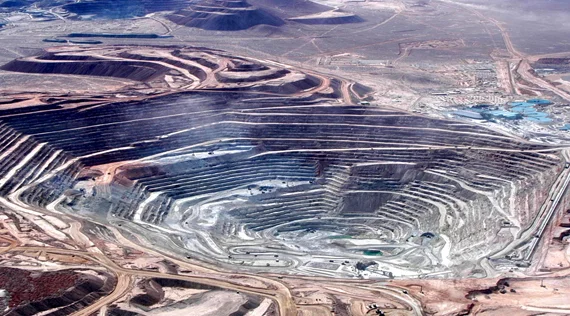
SEATTLE (Scrap Monster): Roughly 70% of copper produced in the U.S. comes from Arizona. Electric vehicles, solar panels and power cables can’t be produced without it, and for the first time last year, the U.S. government added copper to a list of critical materials.
But that designation in July 2023 only applied to a list kept by the Department of Energy.
The U.S. Geological Survey maintains a separate list of critical minerals that comes with tax breaks and speedier permitting. So far, copper hasn’t made the cut.
That may soon change under a measure promoted by Arizona lawmakers that sailed through the House recently.
“The green energy revolution is going to require vast quantities of copper, and so not having it be eligible for that particular tax credit doesn’t make a lot of sense,” said Misael Cabrera, director of the School of Mining & Mineral Resources at the University of Arizona.
Some environmentalists warn that making it easier to mine copper will spread pollution on public lands that are currently protected.
Rep. Melanie Stansbury, D-New Mexico, who opposed the bill, warned during the Nov. 14 floor debate that adding copper to the USGS list could mean that new mines will open without public input and those mines could operate with vastly reduced oversight.
She called it an assault on “commonsense protections” that will allow mines next to popular fishing sites and sacred tribal lands.
“There’s been a sustained effort going back decades by the mining industry to pass legislation” to reclassify copper “as a way to get to those lands and to waive environmental and tribal protections,” she said in an interview with Cronkite News. “It is absolutely a play of the copper industry.”
Despite objections, the House approved the Critical Mineral Consistency Act on Nov. 14, which would add copper to the USGS list. The Senate has not acted on the measure.
All but two House Republicans voted for it, along with one in five Democrats. Democratic supporters included Sen.-elect Ruben Gallego and Rep. Greg Stanton of Phoenix.
“With both critical minerals and critical materials playing such a key role in everything from energy to national security, we need to ensure our federal agencies are operating with the same understanding of what we need to prioritize,” said Rep. Juan Ciscomani, R-Tucson, the main sponsor, in May when he filed the bill.
Ciscomani said his goal was to harmonize the USGS and Energy Department lists.
Arizona lawmakers touted significant direct and indirect economic benefits of adding copper to the USGS list.
Five of the nation’s biggest copper mines are in Arizona, all run by Freeport-McMoRan. The Morenci open-pit complex in Greenlee County – continuously operated since 1939 – is the largest in the country and accounts for half of Arizona production.
According to a 2022 report from the Arizona Mining Association, 74% of copper produced in the U.S. came from Arizona. The state’s copper industry employed 11,330 people and accounted for $6.2 billion in direct economic impact.
The USGS list is used to identify minerals deemed essential to the country’s economic or national security, and vulnerable to supply chain disruption.
The Energy Department list has a similar purpose but doesn’t trigger access to clean energy tax credits under the Inflation Reduction Act. That 2022 law, signed by President Joe Biden, was designed to encourage green energy. It provides a 10% tax credit to offset production costs.
Inclusion on the USGS list would trigger an assortment of regulatory benefits and financial incentives, including FAST-41, which accelerates permitting for certain energy and infrastructure projects. It’s named for Title 41 of the Fixing America’s Surface Transportation Act, which became law in 2015.
“FAST-41 permitting does not take any environmental shortcuts,” Cabrera said. “But what it does is it creates a streamlined approach” to the National Environmental Policy Act, a 1970 law that requires federal agencies to take environmental impacts into account.
That, he added, “has been shown to reduce overall permitting timeframes without reducing environmental protections.”
Courtesy: www.cronkitenews.org



| Copper Scrap View All | |
| Alternator | 0.40 (0) |
| #1 Copper Bare Bright | 4.07 (0.02) |
| Aluminum Scrap View All | |
| 356 Aluminum Wheels (Clean) | 0.77 (0.01) |
| 6061 Extrusions | 0.67 (0.01) |
| Steel Scrap View All | |
| #1 Bundle | 360.00 (0) |
| #1 Busheling | 380.00 (0) |
| Electronics Scrap View All | |